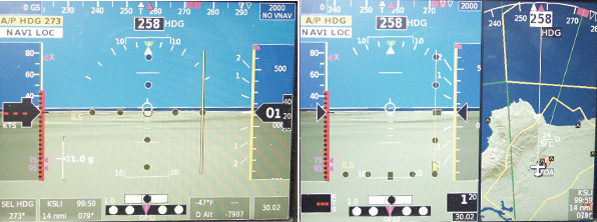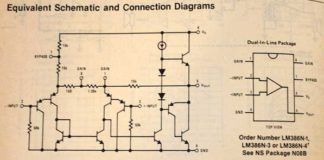Modern Experimental-class instrumentation, based on computers, gains capabilities with frightening speed. It shouldn’t be a surprise. The computer Im staring at is more than three years old, but its on the third major operating system update-my word processor, photo-management program and web browser all look different than when I unpacked the big white box in late 2007.
So it is with the Grand Rapids Horizon HX. To test other equipment, Id removed the GRT and allowed it to gather figurative dust in a corner of the hangar. The plan had always been to reinstall it both to provide a totally independent backup and to help assess any new software that might come along. I kept all the harnesses in place so the refit would be easy.
That plan became reality recently, and like any good computer geek, I immediately went to the GRT web site and downloaded the latest display unit and AHRS software, put it on a USB memory stick and loaded it to the Horizon.
Id left the unit with Software Version 2a, but 2b and then 3 became current while I wasn’t looking. Grand Rapids, like all good software companies, provided a listing of fixes and updates on its web site. Amazingly, the jump from 2a to 2b included 60 changes, some very minor (like altering font size to improve scaling) and some to fix niggling lockup issues (such as when the weather module was turned off in flight.) Another 30 or so line items were included in the jump to version 3. The content of the lists is amazing when you consider that GRT isn’t exactly overflowing with software engineers. Enthusiasm, yes, but I don’t suppose youd mistake GRTs office with IBMs.
A push to improve the top-down map presentation underpins the efforts in version 3. There are now roads, state outlines, railroads and many other features. The map background when not using synthetic vision and terrain depiction is now a uniform earth color and therefore no longer an MS-DOS inky black. But more important, I think, is that the presentation of airspace and airports is greatly improved. One of the noted updates is use more consistent placement of airspace labels. GRT has made great strides here. It was one of those aspects of the Horizons top-down map that I didn’t like but couldn’t quite define-it just seemed that I couldn’t find what I was looking for with the map in certain configurations. And thats a bad thing when navigating around complex airspace; we have a lot of it in Los Angeles.
Another detail improvement involves the depiction of the flight director and course-deviation bars on the primary flight display. In previous software versions, the CDI was either a pair of large yellow needles or a set of solid-yellow rectangles moving among outline-yellow rectangles for scale. That presentation was fine when the attitude display was blue-over-brown, but introduce the pale gray ground contours with synthetic vision and the CDI nearly vanishes. More than a year ago, Id asked if the colors could be changed, and now-much to my pleasure-the yellow boxes have black outlines and the dots representing course deviation in the needles mode have dark gradients in the center. As a result, both CDI forms pop out of the busy background.

One of the original complaints about the previous version of the Grand Rapids Horizon HX was the presentation of the ILS/VOR needles, which were uniform yellow in software version 2a. Now, with version 3, both forms, needles (left) and scales (right, shown with the one-third moving map), have a thin black outline and darkened centers to make them more distinct from the synthetic vision background.
Although I wasn’t able to test it, I understand that the GRT box now has much improved autopilot programming. As with many sophisticated systems, the Horizon HX interprets what you want the airplane to do-fly level, follow the heading bug, climb or descend to a specific altitude, whatever-and issues GPSS (GPS Steering) and GPSV (GPS Vertical) commands to the autopilot through the ARINC 429 data stream. GRT tweaked the algorithms and provided a new setting to help smooth transitions to and from level flight. In this iteration, the company also added support (via serial connections) for the Vertical Power VP-X, Life Guardian CO detector, ADS-B traffic and weather, and more-good thing it has so many serial ports, then.
Are we losing sight of actually flying when we have such toys in the cockpit? Maybe, but its a treat to visit the manufacturers site and discover that Christmas arrived early in the form of new features.
Oh, XM
Recently, on AvWeb, my frequent traveling partner Paul Bertorelli wrote a blog about a trip in the Sportsman where we lost the XM receiver in the Garmin G3X EFIS. It wasn’t cause to panic, but was cranky-making when I thought of the $70-plus charge every month from XM. (That and having to actually call Flight Watch now and again.) Turns out, it wasn’t XMs fault, but the round-and-round I experienced while trying to reset my account had me steaming.
In the G3X, as with other XM-based systems, each device has a Radio ID. When you change a display unit with XM, the replacement will have a new Radio ID. So after 30 minutes on hold-and a dropped call-and another 30 minutes on hold, I thought I had the account transferred to the new Radio ID. Um, no. Whatever happened at that call center on the other side of the world didn’t take. The receiver showed a no-service message. Worse, XMs web-based refresh feature was down for maintenance, for 24 to 36 hours, according to the site.
I didn’t have to fly, so I left the refresh for the next day, which included another 20 minutes on hold and the information from the customer-service rep that my account was inactive. (It was not.) After several minutes of trying to get it reset, the rep said that she couldn’t make it work because of a problem with the XM system, and to wait for it to clear. The web refresh locked me out because of too many recent refresh requests. Yes, XM weather did eventually work. Isnt it funny how the charge for XM weather is so low when you’re using it in anger but so high when it doesn’t work to expectations? I have wonder if weather from the government through ADS-B will be any better.

![]()
Marc Cook has been in aviation journalism for 22 years and in magazine work for more than 25. He is a 4400-hour instrument-rated, multi-engine pilot with experience in nearly 150 types. Hes completed two kit aircraft, an Aero Designs Pulsar XP and a Glastar Sportsman 2+2.













